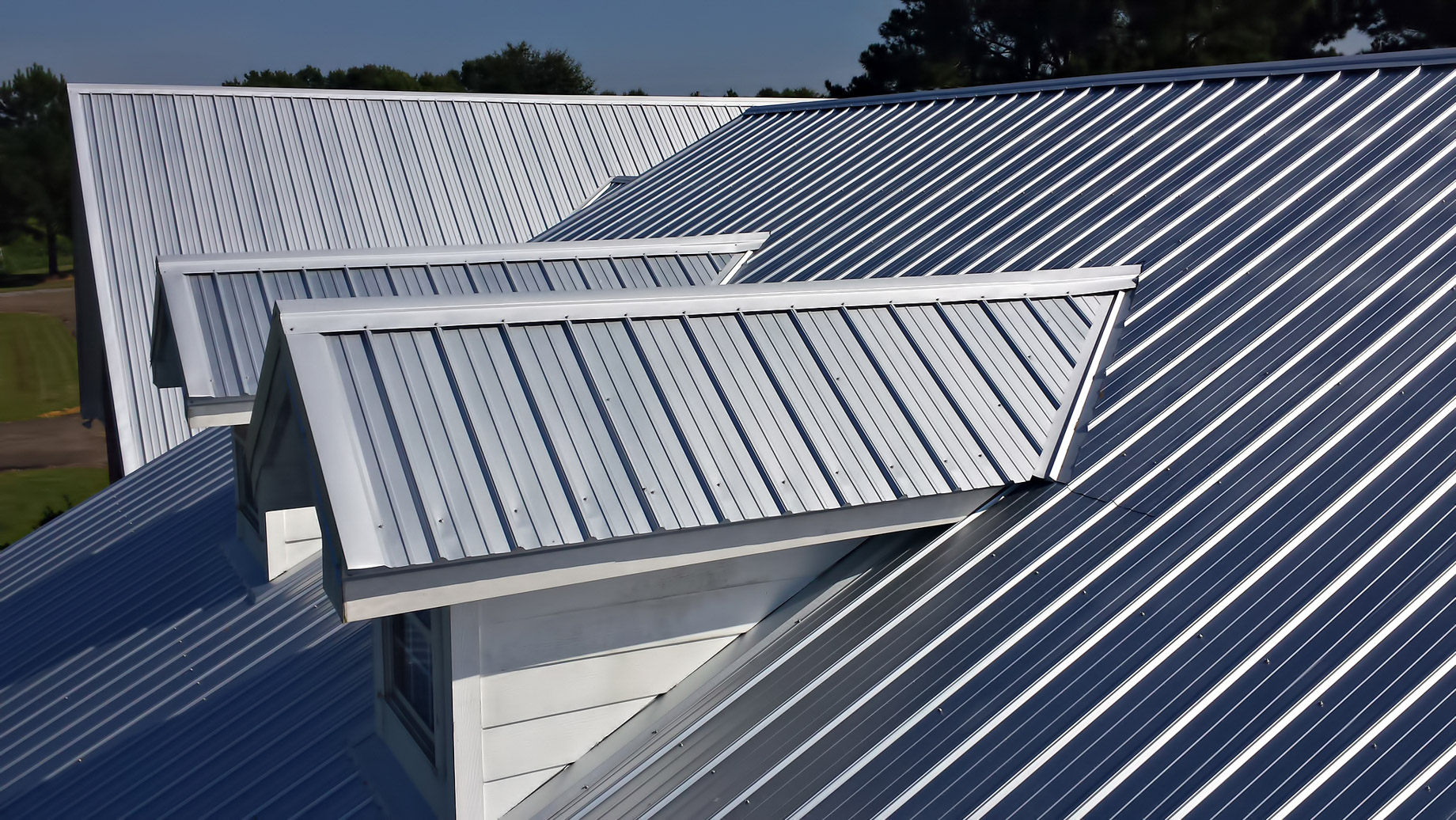
Are you considering updating your roof anytime soon? It can be daunting, but with the correct information and step-by-step guidance, it doesn’t have to be. This article will provide an in-depth guide to help make the process easier for you.
Generally, you must be clear on why you’re looking to update your roof in the first place. Are there any existing problems like leaks or damaged shingles? Or maybe you want a fresh new look? In addition, consider factors such as budget and ease of installation when deciding.
With this guide, you’ll be well on your way toward an updated roof that perfectly serves its purpose. Continue reading to know more.
Definitive Guide To Roofing Your House
Roofing your house doesn’t have to be a tedious task. With careful planning and preparation, you can update your home’s roof quickly. Here’s a step-by-step guide for your reference:
1. Secure The Necessary Permits
Before you can begin replacing your roof, it’s important to secure the necessary permits. You’ll need to contact your local city office and ask for information about specific requirements in your area. Depending on where you live, additional paperwork or inspections may be required before you start any construction project.
Most cities require a permit for the installation of new roofs, as well as any other major home improvements. If you’re unsure whether or not you need a permit, consult an experienced contractor who can help assess the situation. It’s always better to be safe than sorry about legal matters like this.
2. Tear Off The Old Roof
Tearing off the old roof is one of the more labor-intensive parts of the process. It would be best to consider hiring a reputable contractor, such as Arrowhead Roofing. With their exceptionally skilled and equipped service providers, you’ll rest assured they’ll get the job done right.
For DIYers, always wear safety equipment, such as glasses, gloves, and boots, with a good grip. Start by removing all nails from around the edges of each shingle; this will help when prying them up later. Afterward, use a flat bar or crowbar to carefully pry up each row of shingles until they are completely removed.
Once all shingles are taken off, inspect for any signs of rot or damage beneath where the old roof was attached. If needed, replace any damaged areas before beginning the installation of your new materials.
3. Inspect The Existing Structure
Before you can begin the actual process of updating your roof, it’s essential to inspect the condition of its existing structure. Are there any weak spots or areas that need reinforcement? If so, they should be addressed before proceeding with the update.
Start by visually inspecting the area for signs of wear and tear, such as cracks in shingles, missing shingles, or water damage. You may also want to check for loose nails or screws that could cause further problems. Once you’ve identified any problem areas, repair them using new materials. This includes replacing warped wood pieces, filling nail holes with caulk, and adding additional support beams.
4. Install The Underlayment
The first step in updating your roof is to lay the underlayment. Underlayment serves as a barrier between the shingles and the deck of your roof, protecting it from moisture while keeping heat out. It’s important to use an appropriate material for this job that is rated for high temperatures and can withstand any weather conditions you may experience in your area.
When installing the underlayment, begin at one end of the roof and unroll each section until you reach the other side. Make sure there are no wrinkles or creases in the material as you go along. Secure each section by nailing it into place with galvanized nails spaced about eight inches apart down both sides of the roll.
5. Install The Drip Edge
Installing a drip edge is an essential step in updating your roof. A drip edge is a metal flashing installed along the edges of your roof to prevent water from getting underneath and causing leaks. Here’s how you can install one:
- Measure the length of the drip edge needed for each side of the roof. Then cut it with tin snips or a saw so it fits nicely on each side.
- Attach the drip edge using galvanized nails at least one inch away from where it meets the shingles. Make sure they’re secure and not loose.
- Once all pieces are in place, check over everything again to ensure there are no missed spots or weak points that could cause leaking later down the line.
With proper care and maintenance, this update will help keep your home safe from water damage for years to come.
6. Install Your Valley Flashing
Valley flashing is a crucial part of the roofing process. It helps protect your home from water damage, leading to costly repairs. Installing it correctly will ensure a solid and durable roof for many years.
You can do this by measuring the length of each valley to determine how much flashing material you need for each one. Cut out pieces of flashing slightly longer than the measurements taken so there is enough overlap on either end of the valley when affixed. Now bend each piece into an ‘L’ shape with a hammer before laying them along both sides of the valleys at least six inches away from where they meet up with other shingle sections or ridge lines.
Once bent appropriately, nail them securely using galvanized nails long enough not to be pulled through by wind pressure but short enough not to penetrate the opposite side of the flashing material.
7. Install Your Starter Shingles
The starter shingle serves a dual purpose: It protects the edges of your roof from water intrusion and provides an even starting point for laying out your other shingles. Here are some tips on how to properly install starter shingles.
- Measure out enough starter material to cover the entire edge of your roof. To do this, use a tape measure or ruler. Ensure each row of shingles overlaps its predecessor by about one inch. Then cut those strips into pieces to fit along the edge of your roof perfectly.
- Lay down your adhesive strip along the length of each strip before positioning them onto the roof. This ensures they stay put while keeping water away from exposed areas. Once all your adhesive strips have been applied, nail down each piece using galvanized nails spaced roughly six inches apart.
For your peace of mind, check back periodically to ensure they have stayed the same due to weather conditions like wind or heavy snowfall.
8. Nail Down Shingles
Start with a row of full-sized shingles at the bottom, and nail them down in place. Make sure nails are correctly aligned and secure. Each row should be nailed on both sides of each shingle tab and approximately one inch from each edge of the tabs.
Once all the full-sized shingles are in place, move on to cutting pieces for additional rows. Use a utility knife, or power saw to cut pieces for step flashing around vents, chimneys, skylights, etc., so water does not seep through these areas of your roof. To ensure proper installation, use a chalk line to draw guidelines where you’ll need to make cuts into existing shingles before laying down newly cut pieces.
9. Install Flashing
Every roof is different and may require additional flashing to be installed. Step or dormer flashings are typically used when a sloping roof meets a vertical wall, such as in the case of an attic window or bay window. To install step and dormer flashing correctly, you’ll need a few basic tools: a caulking gun, measuring tape, chalk line, utility knife, snips, and tin snips.
Begin by measuring the area where the step or dormer will go, and then use the chalk line to draw a straight line along the edge of your measurements on both sides of the wall. Cut off any excess material from each side with your utility knife. Once cut to size, place one end of the flashed piece over the top of one side’s measurement mark, and secure it with nails.
10. Add The Vents
Adding the vents is an important step in updating your roof. To begin, measure and cut out the appropriate size vent for each area where you need one. Ensure it fits securely into place before moving on to the next step.
Next, use a sealant or caulk around each of the edges of the vent opening. This will ensure no water can get inside and cause any damage over time. Use enough sealant to cover every edge with at least two coats of product. Finally, once all vents are in place and sealed properly, check that everything looks secure and there aren’t any gaps between them and the roof surface.
11. Install Ridge Cap
The ridge cap is the final piece of roofing material that needs to be installed. Installing it correctly is essential for your roof to stay watertight and secure. Start by measuring the length of the ridge line, and then cut a piece of ridge cap slightly longer than this measurement. The extra inch or two will provide adequate overlap on both sides when you lay down the first course.
Position the ridge cap along one side of the peak so that about an inch stick out over each edge. Secure with nails at four-inch intervals, making sure they are driven into solid wood beneath the sheathing. Additionally, ensuring enough space between nail heads allows proper expansion and contraction due to temperature changes.
12. Replace Your Gutters
Replacing your gutters is integral to roof maintenance as they help keep water away from your foundation and protect your home from potential damage due to moisture seepage. Here are a few steps to follow when replacing your gutters:
- Measure the length of the gutter needed for each side of the roof.
- Purchase materials, such as hangers, fascia brackets, downspouts, elbows, etc.
- Use a saw to cut pieces of gutter material according to size specifications.
- Assemble all of the parts with sealant or caulk.
The next step would be to install them onto the house’s existing structure. Make sure you use strong screws so that they can hold up against heavy rainfall and winds.
13. Final Assessment And Cleaning
Once you’ve installed your new roof, doing a few final assessments and cleaning up before calling the job done is important. Start by looking at all the exposed nails, and ensure they are flush with the surface. If any have been driven too deep, use a hammer or nail set to get them back in place. Next, check that there is no debris or construction material left behind. Finally, inspect for any leaks or signs of damage caused during installation; apply asphalt sealant to repair minor imperfections if necessary.
Conclusion

Updating the roof of your house is a huge project, but it can be done with proper preparation and professional help. To ensure everything goes according to plan, you must get the proper permits, tear off the old roof safely, make any necessary repairs or reinforcements, and add vents. Once this is resolved, you should install your ridge cap and replace your gutters before giving everything a final check.
By carefully reviewing each step outlined here, you can complete the job yourself without encountering too many issues. With patience and diligence, you’ll soon have a beautiful new roof above your head that will protect your home from rain and wind for years.